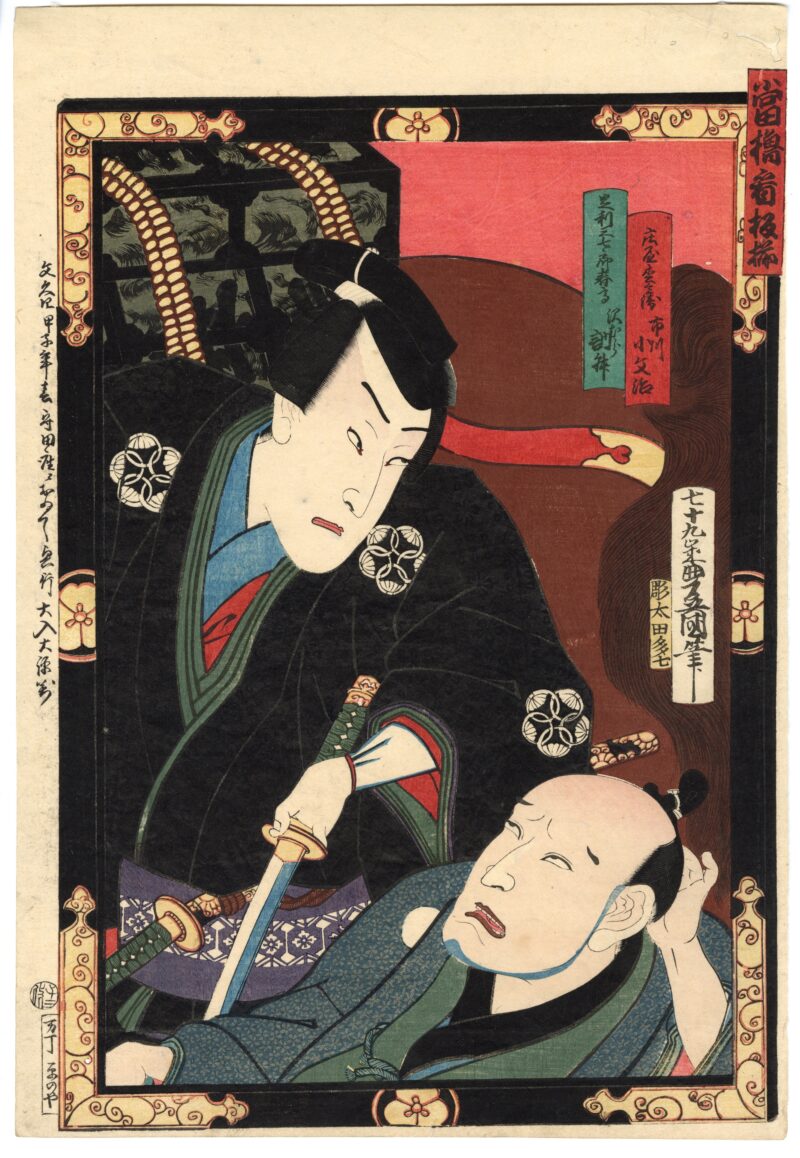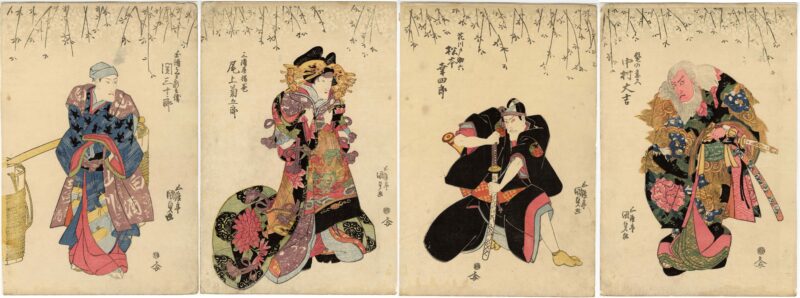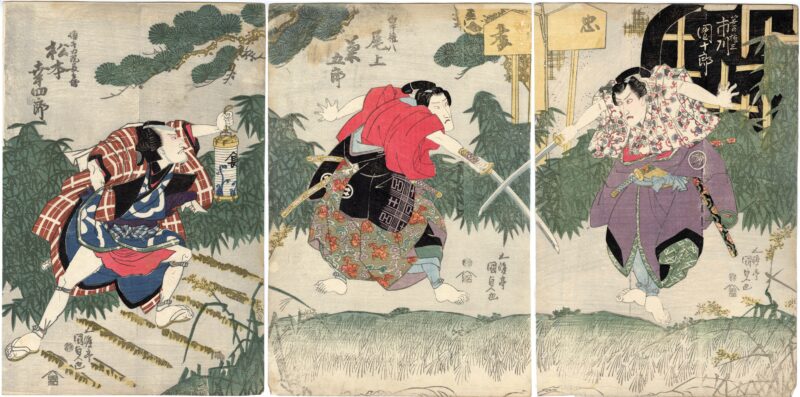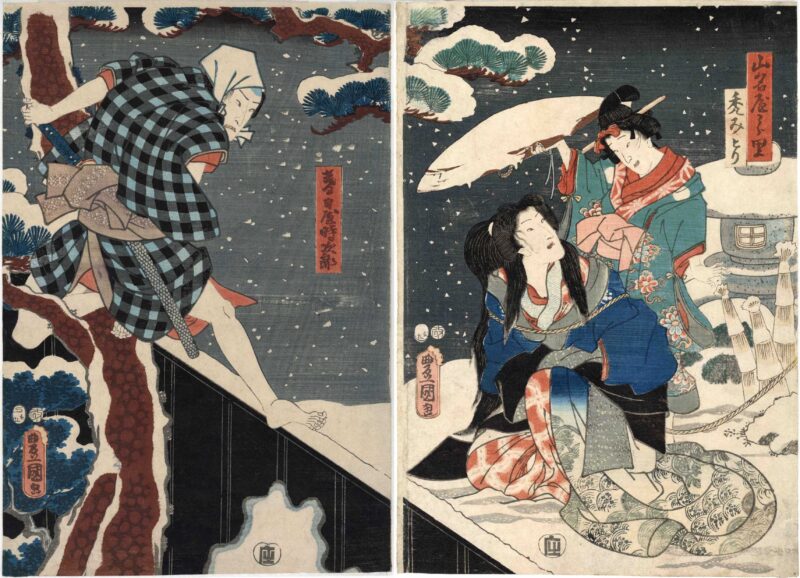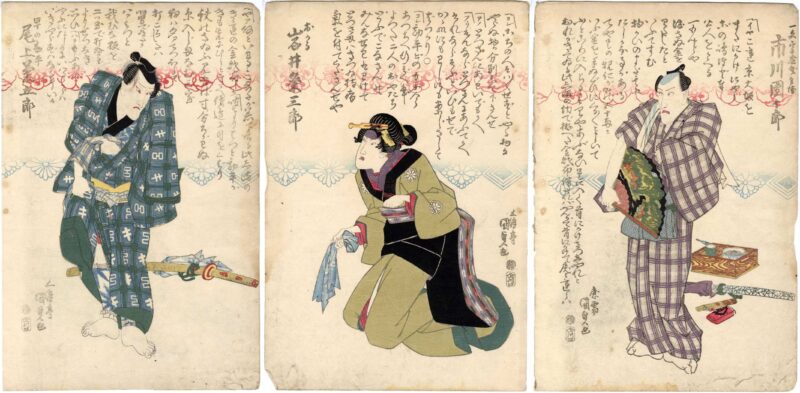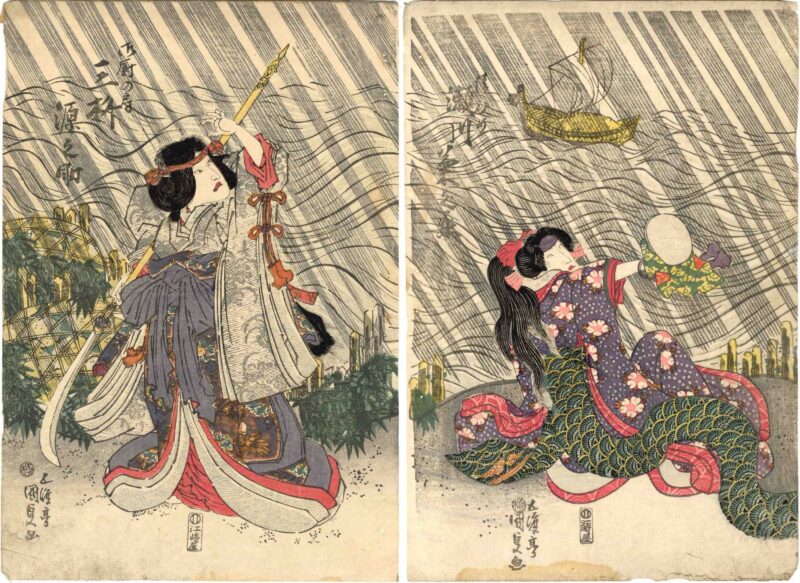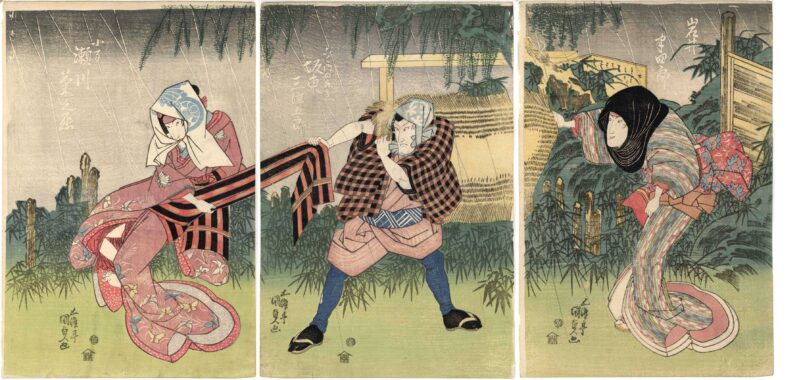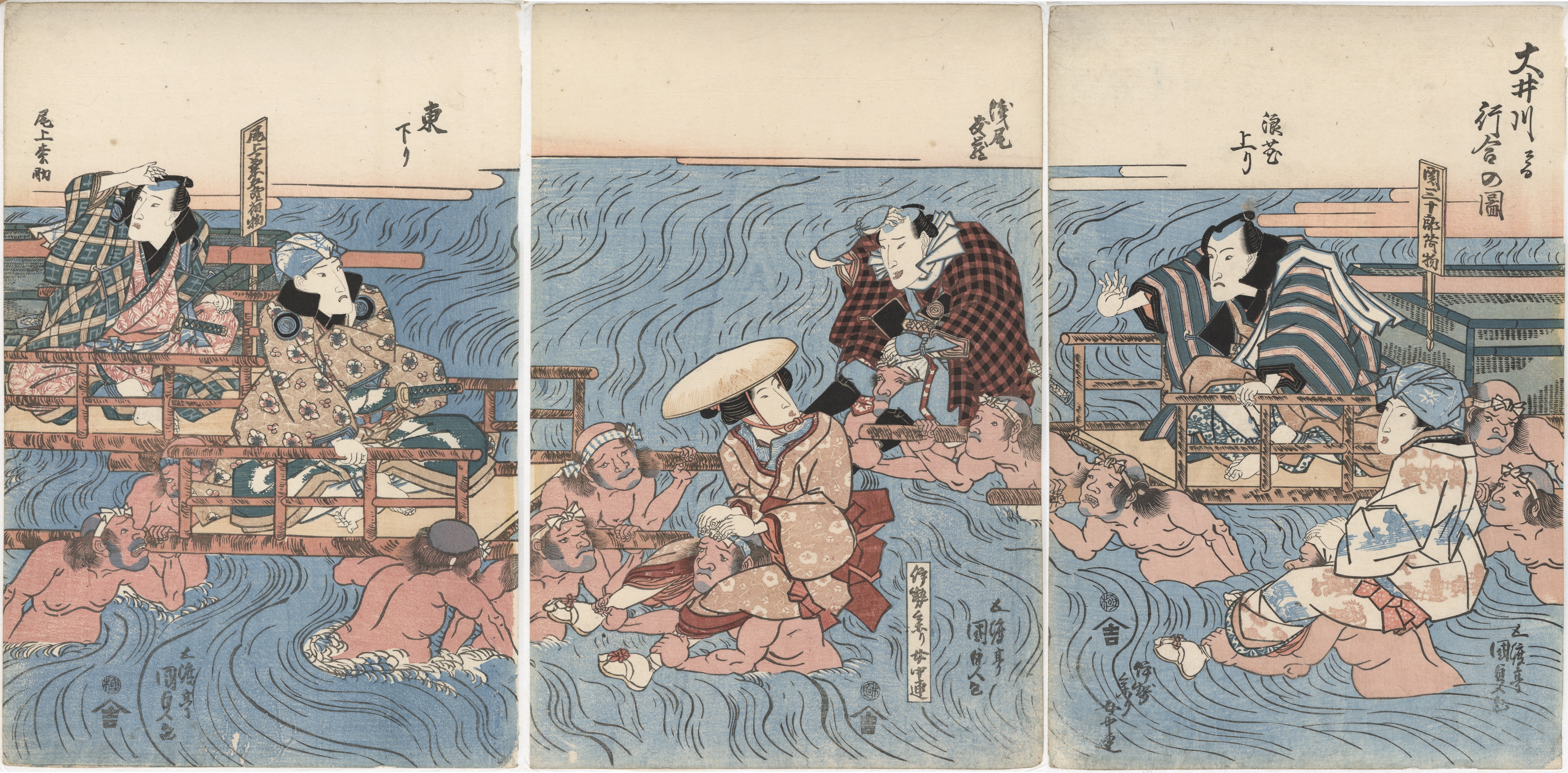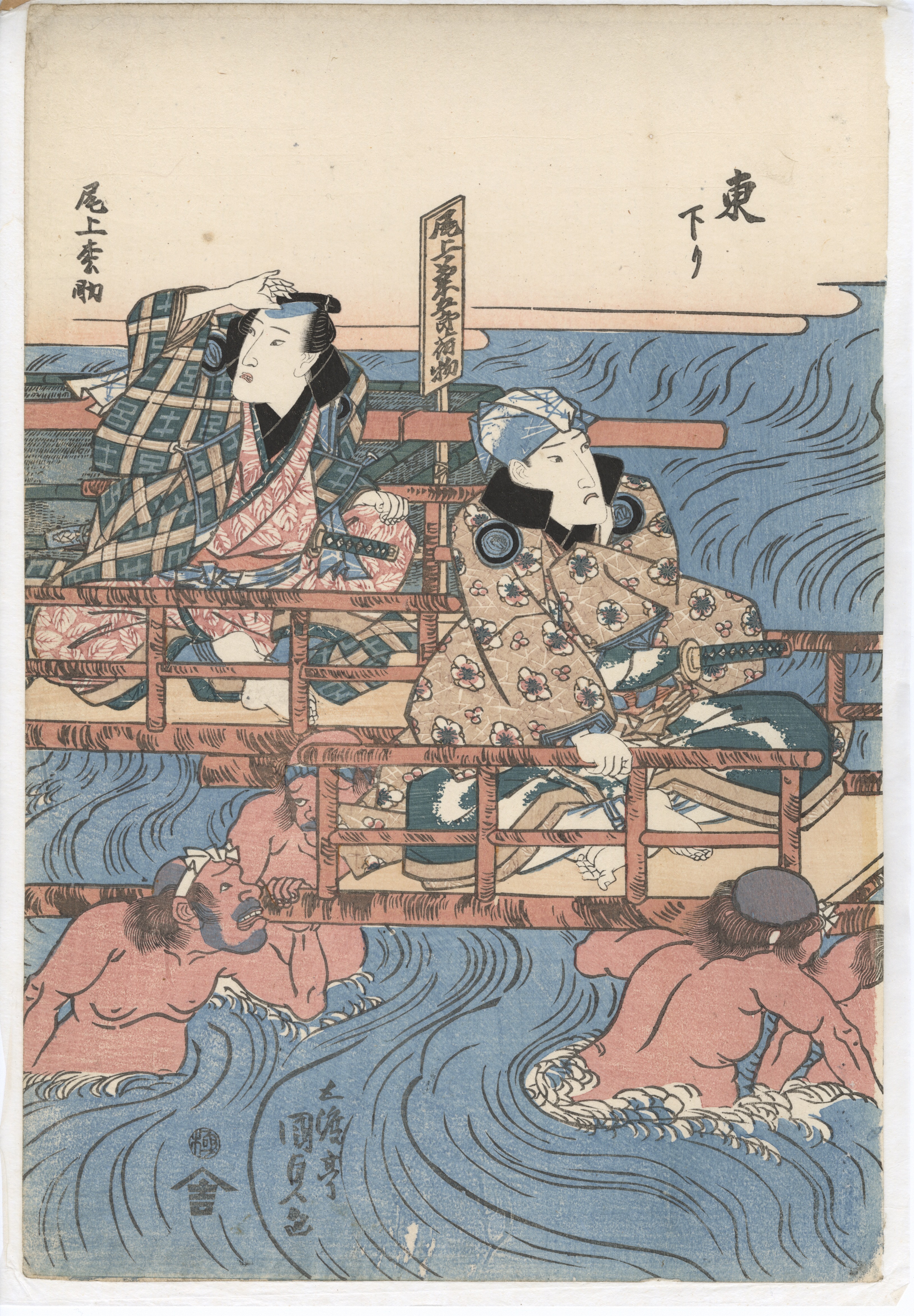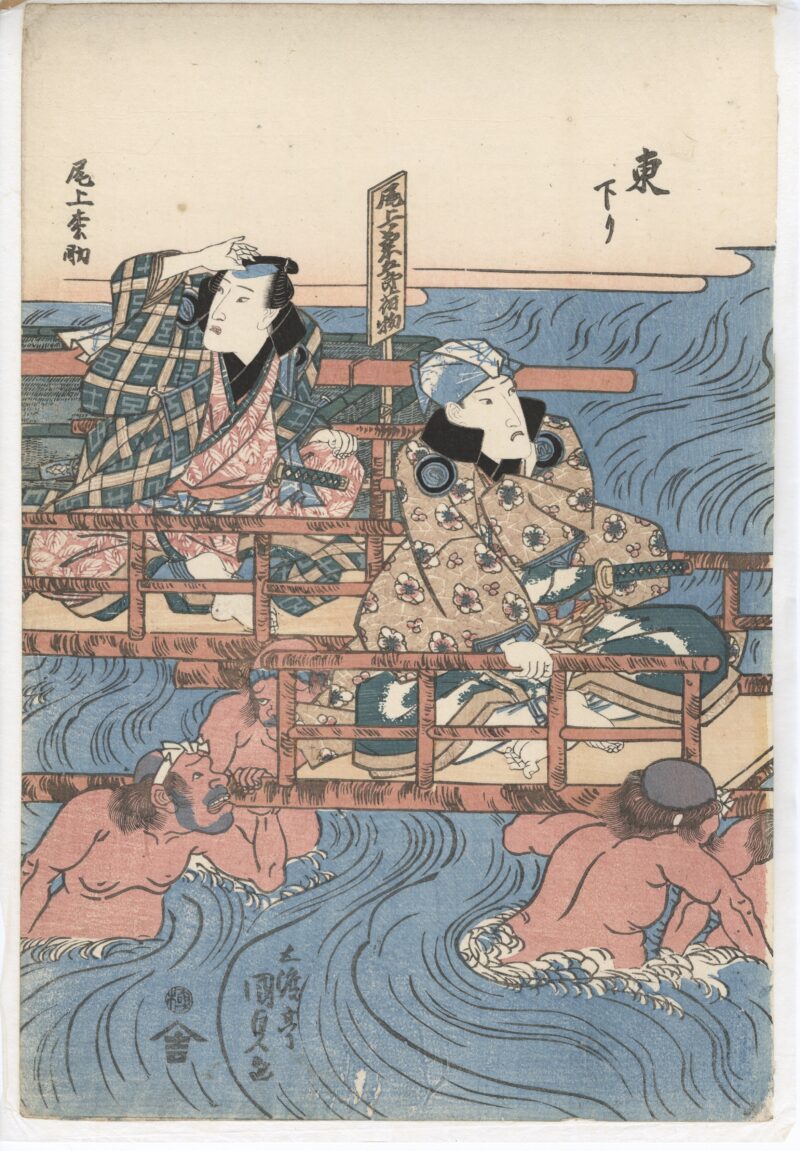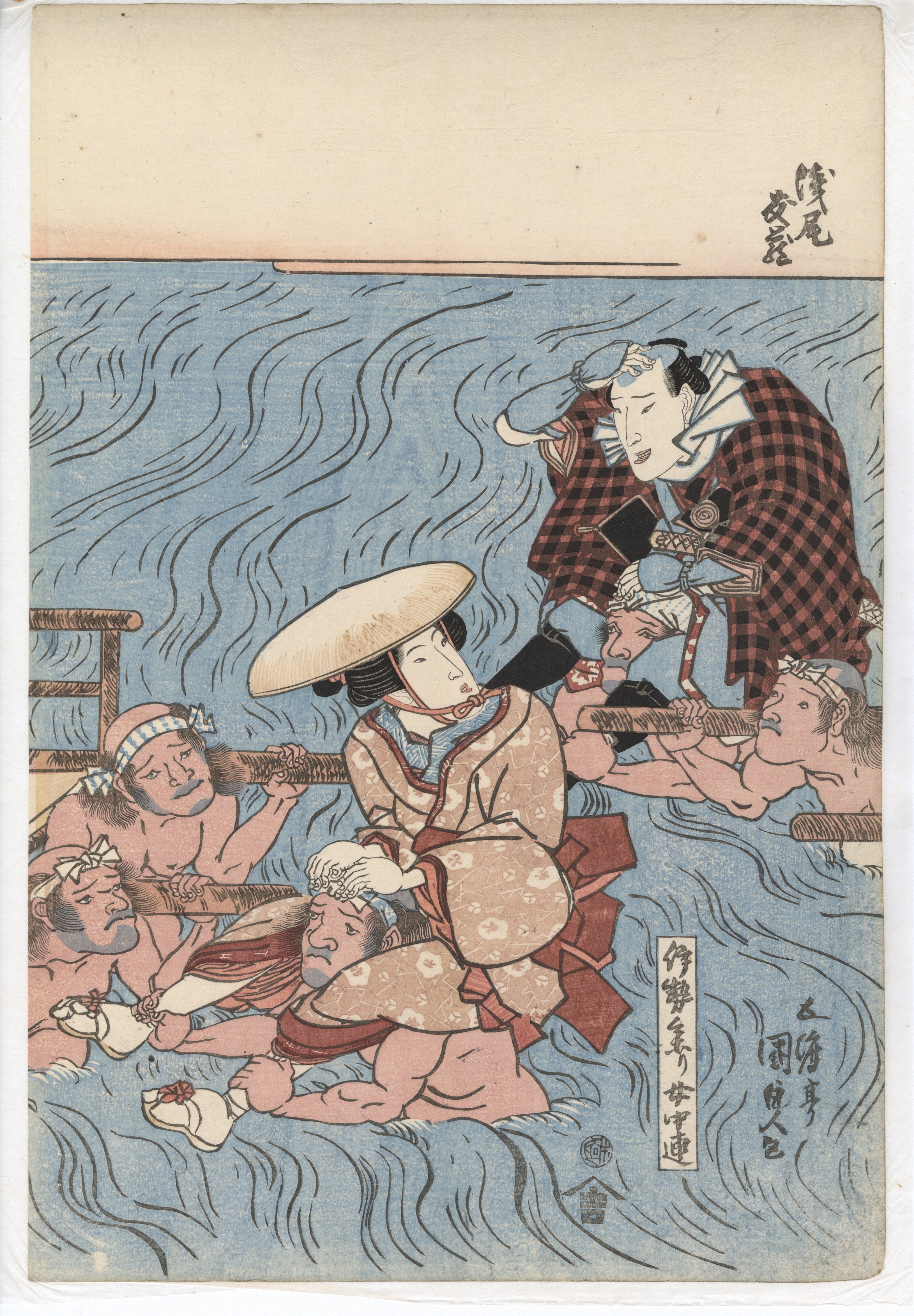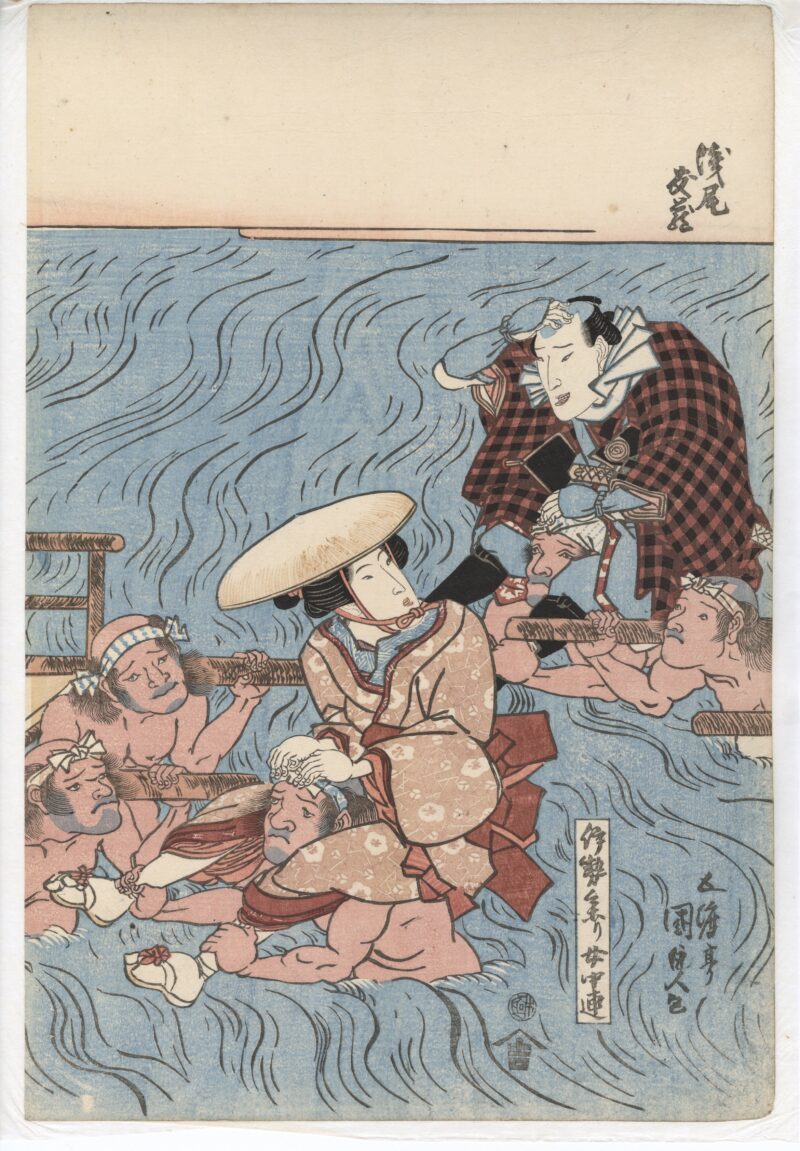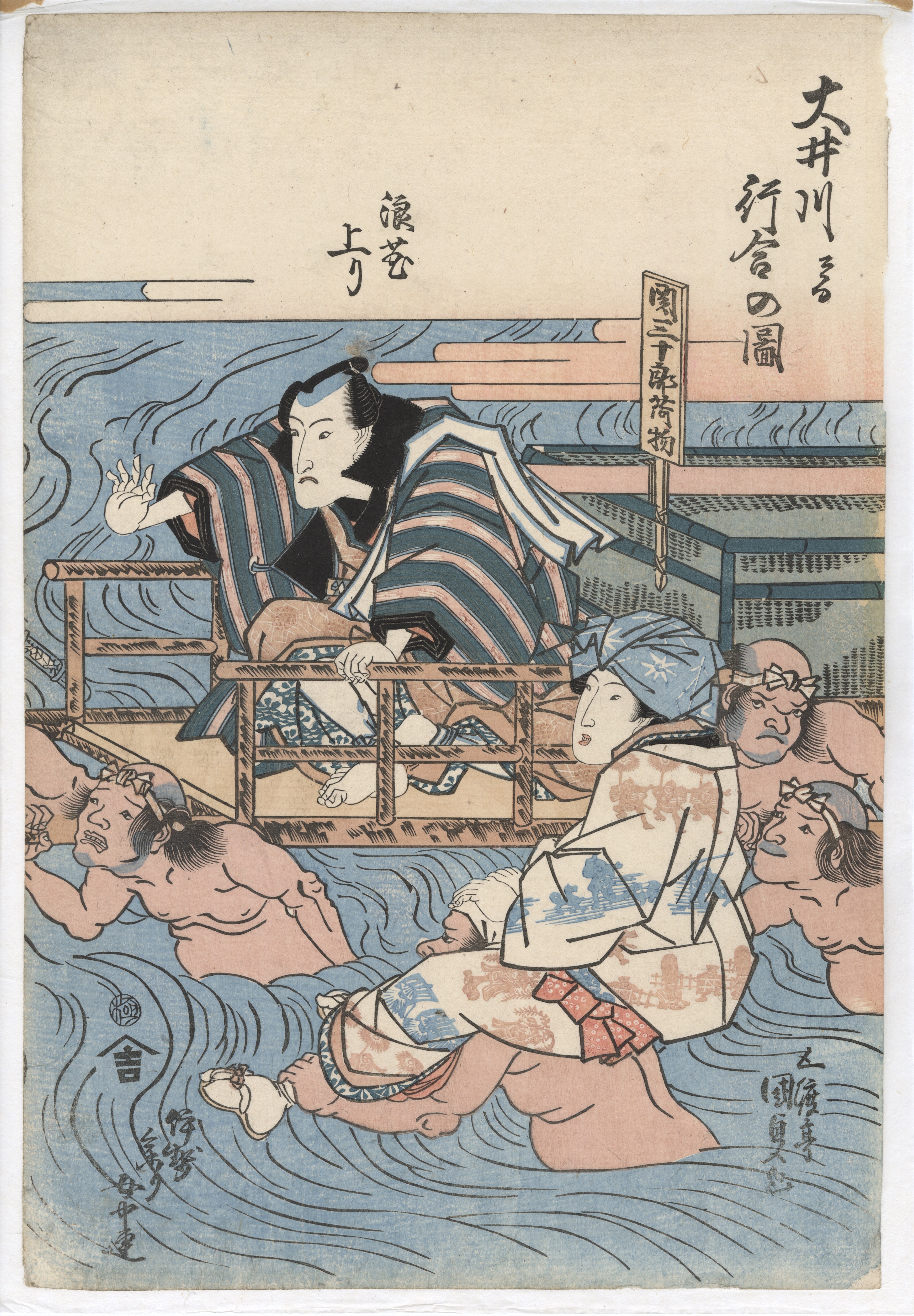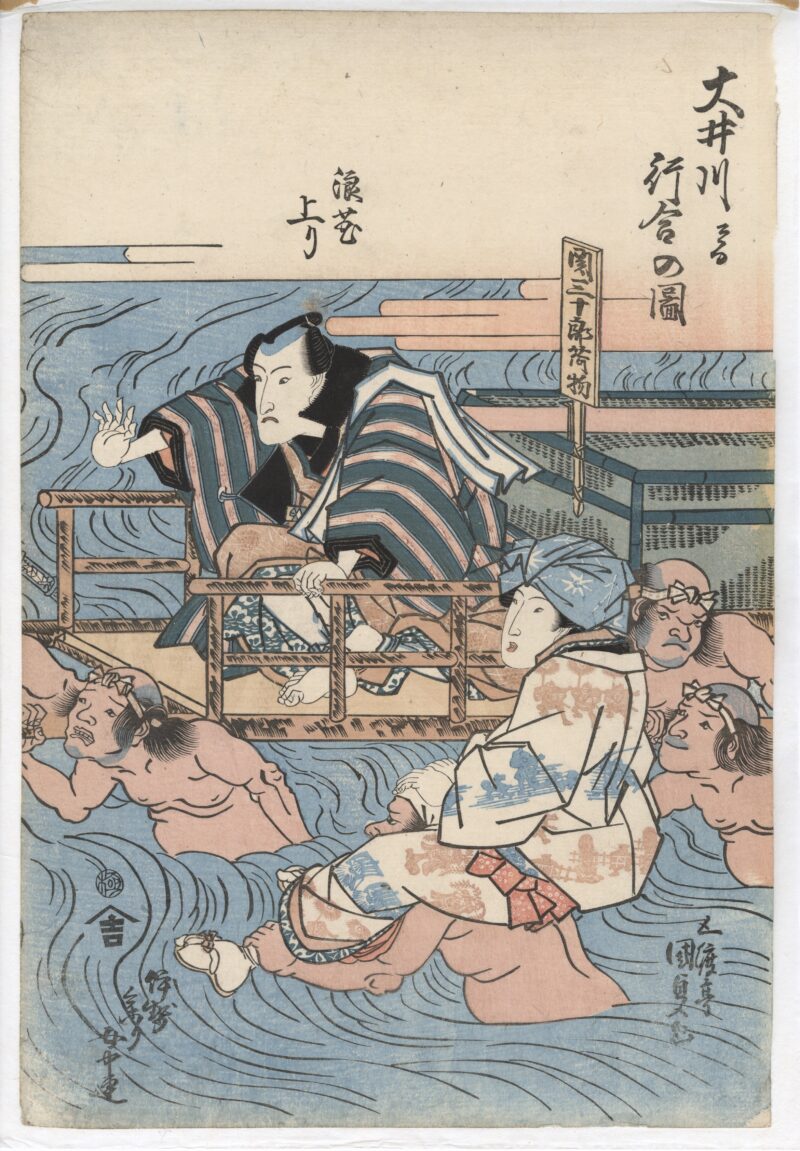Description
Various groups of travelers pass each other in the Ōi River as they journey on the Tōkaidō road between Edo and the Kamigata region of Kyoto and Osaka. On the right is the troupe of Seki Sanjūrō II (1786–1839). Behind him is a wooden sign that reads “Seki Sanjūrō’s luggage” (関三十郎荷物). They are on their way to Osaka (Naniwa), a city with a vibrant Kabuki theatre scene and Sanjūrō’s birthplace. During his career his was mostly active in Edo but sometimes performed in Osaka as well. In the centre sheet is the actor Asao Tomozō (1797–1851, also known as Yoroku), another Osaka-born actor who performed in both cities. Both actors traveled to Osaka in the autumn of 1826 to perform in the play Genpei no Nunobiki no Taki (Minamoto and Taira, and the Nunobiki Waterfalls) in the 12th month of 1826, which allows us to date this print. Coming from the opposite direction, in the left sheet, are the actors Onoe Kikugorō III (1784–1849, also known as Ōkawa Hachizō) and his son, Onoe Matsusuke III (1805–1851), who travelled from Osaka to Edo around the same time (he also has a luggage sign). Kunisada jokingly suggests with this print that the actor troupes crossed paths while making their way across the Ōi River. Special carrier services had to be hired to be able to cross because there was no bridge – frequent flooding prevented a bridge from being built. The triptych might have also served as an advertisement for an upcoming play: in 1827 Kikugorō III played the role of Nippon Daemon in the play Hitori tabi gojūsan tsugi (A Lone Journey along the 53 Stations), which contains a reenactment of an Ōi River crossing. To add liveliness to this scene, Kunisada added two ‘castle maids’ (jochū), female servants in wealthy samurai households, who are on a pilgrimage to the great shrines of Ise (Ise mairi jochū ren 伊勢参り女中蓮).



